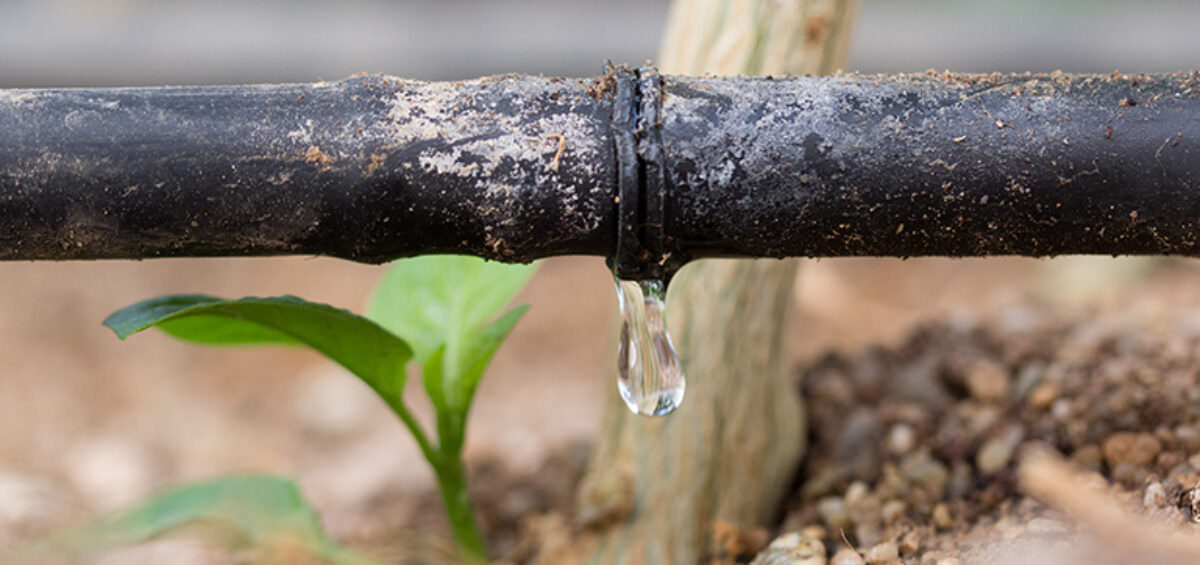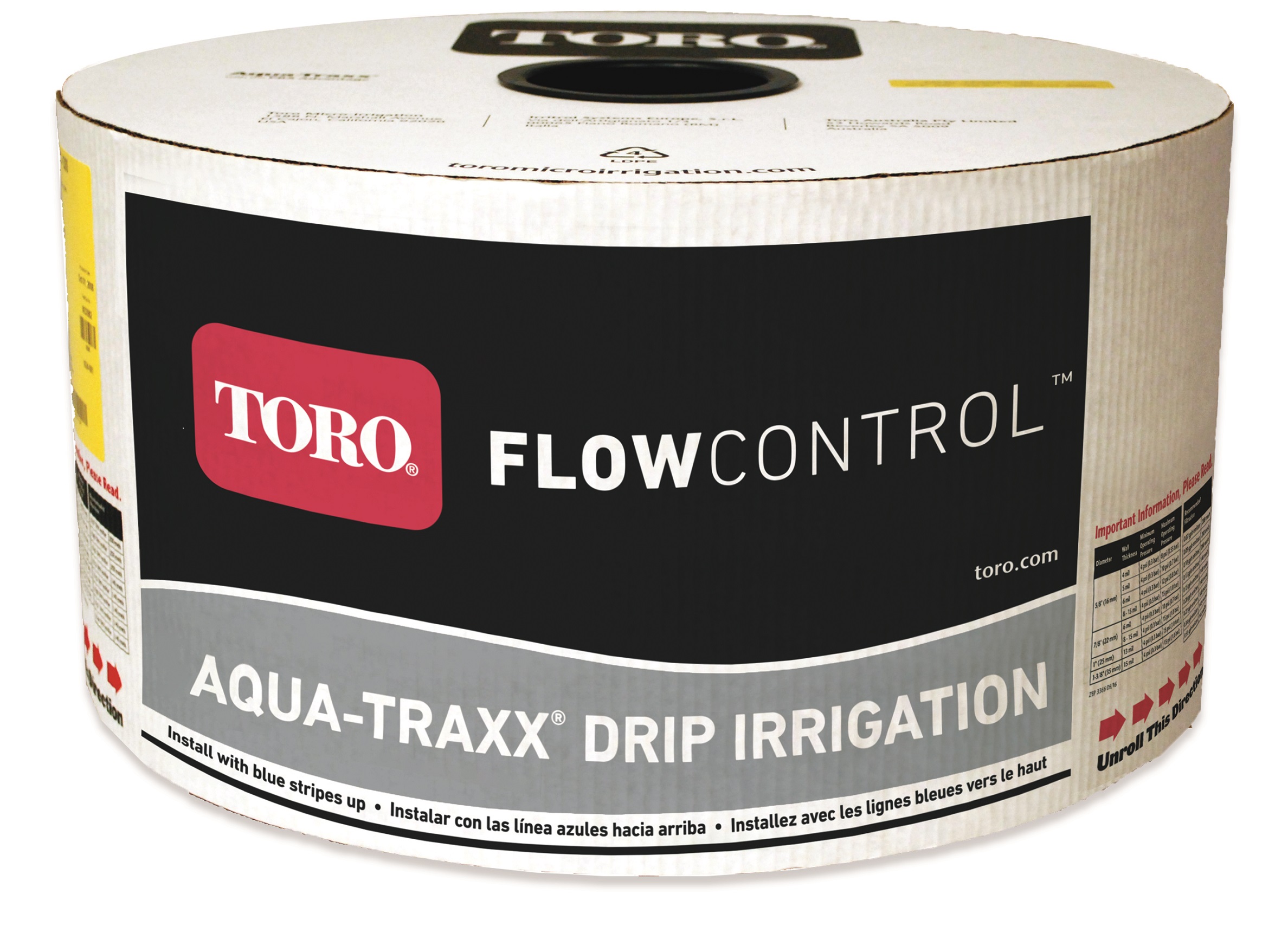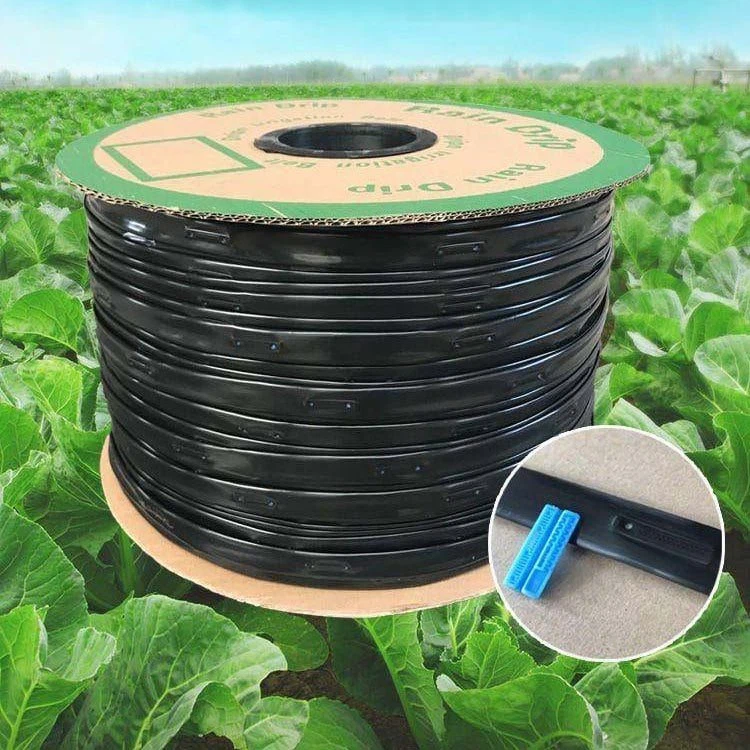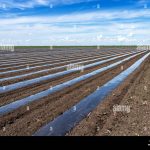Imagine transforming your garden or farm into a lush, thriving paradise without wasting a single drop of water. Sounds perfect, right?
That’s where drip tape comes into play. As you strive for efficiency and sustainability in your irrigation practices, understanding the role of drip tape in precision irrigation becomes crucial. This simple yet revolutionary tool can be your secret weapon in ensuring that every plant receives just the right amount of water.
By the end of this article, you’ll discover how drip tape can save you time, conserve water, and boost your crop yield. Stay with us to learn how you can harness the power of drip tape for a more bountiful and eco-friendly harvest.

Drip Tape Basics
Drip tape is essential in modern agriculture. It provides precise irrigation solutions. Understanding its basics can help optimize water usage in farming. Drip tape is a thin-walled tube. It delivers water directly to plant roots. This minimizes waste and improves efficiency. Farmers find it cost-effective and easy to install. It’s perfect for crops needing consistent hydration.
What Is Drip Tape?
Drip tape is a flat tube made from polyethylene. It expands when filled with water. Tiny holes in the tape release water slowly. The slow release allows plants to absorb water efficiently. This system reduces evaporation and runoff. It’s ideal for areas with limited water supply. Drip tape comes in various diameters. Choose the size based on crop needs and soil type.
How Does Drip Tape Work?
Water flows through the drip tape under low pressure. The pressure keeps the flow steady and consistent. Emitters are spaced along the tape to distribute water evenly. The spacing depends on the crop’s water requirements. Drip tape works best when laid out in rows. It maintains uniform moisture levels across the field. Regular checks ensure no leaks or blockages.
Advantages Of Using Drip Tape
Drip tape conserves water by delivering it directly to roots. It reduces weed growth by keeping surface areas dry. Installation is simple and requires minimal labor. Drip tape adapts to varying field conditions. It’s suitable for both flat and sloped terrains. This system enhances crop yield and quality. Consistent watering promotes healthy plant growth. Maintenance is straightforward, reducing long-term costs.
Advantages In Precision Irrigation
Drip tape plays a crucial role in precision irrigation, ensuring efficient water use. It delivers water directly to plant roots, reducing waste and promoting healthy growth. This method supports sustainable farming practices by conserving resources and enhancing crop yield.
Precision irrigation has significantly transformed how we approach farming, offering targeted and efficient water use. One key player in this technology is drip tape, a tool that ensures crops receive the right amount of water directly to their roots. This method has a number of advantages that can help you optimize your irrigation processes, save resources, and boost crop yields.Enhanced Water Efficiency
Drip tape delivers water directly to the base of plants, minimizing waste. Instead of watering an entire field, you can focus on the plant roots. This reduces evaporation and runoff, ensuring that water goes where it’s needed most. Wouldn’t you want your crops to receive the perfect amount of hydration without any waste?Consistent Crop Growth
With drip tape, each plant receives uniform water distribution. This consistency helps in achieving even growth, making harvesting more predictable. Imagine the satisfaction of seeing your crops grow evenly and healthily across the field.Reduced Weed Growth
Weeds thrive where there is excess water. Drip tape targets only the plants you want to nourish. By focusing water delivery, you reduce the chances of weeds taking over your fields. Less time spent weeding means more time for other important farming tasks.Soil Health Preservation
Traditional irrigation can lead to soil erosion and nutrient loss. Drip tape maintains soil structure, as water is applied slowly and directly. This gentle approach keeps the soil healthy, which is vital for long-term agricultural success.Cost-effective Solution
Implementing drip tape can save you money. By using less water and reducing the need for fertilizers and herbicides, you cut down on costs. Plus, the increased yields can lead to higher profits. How does investing in a system that pays for itself over time sound?Adaptability To Various Terrains
Drip tape works well in diverse terrains and soil types. Whether you’re farming on a slope or in a flat field, drip tape can be adjusted to fit your needs. This flexibility allows you to maintain productivity in challenging environments. Precision irrigation, with the help of drip tape, offers numerous advantages. It’s about making smart choices for your crops and your pocket. Wouldn’t you want to make the most out of every drop?Installation And Maintenance Tips
Drip tape plays a crucial role in precision irrigation. Proper installation and maintenance ensure its efficiency. Well-installed drip tape can save water and enhance crop yield. Regular upkeep prolongs its life, reducing costs over time.
Installation Tips
Start by planning the layout. Ensure even water distribution across all plants. Measure the field accurately to determine tape length. Consider soil type and plant spacing while planning. Use a pressure regulator to avoid tape damage. Install a filter to prevent clogging.
Lay the tape flat on the ground. Keep it away from sharp objects. Secure the tape with stakes or pins. Connect the tape to the main water supply. Check connections for leaks. Adjust the water pressure for optimal flow.
Maintenance Tips
Inspect the tape regularly for leaks or blockages. Replace damaged sections promptly. Clean the filter frequently to ensure smooth water flow. Check the pressure regulator for proper operation.
Flush the system periodically to remove debris. Monitor the plants for signs of uneven watering. Adjust the system as needed. Store unused tape in a cool, dry place. Protect it from direct sunlight.
Regular maintenance extends the tape’s lifespan. It ensures efficient water use and healthy plants.

Maximizing Water Efficiency
Drip tape plays a crucial role in precision irrigation, enhancing water efficiency by directing water straight to plant roots. This method reduces water waste, ensuring crops receive optimal moisture while minimizing evaporation. By using drip tape, farmers can conserve water and improve crop yields effectively.
Maximizing water efficiency is a critical goal in modern agriculture, especially as water resources become scarcer. Drip tape, a key component in precision irrigation, offers a solution that helps farmers use water more effectively. By delivering water directly to the plant roots, drip tape reduces waste and promotes healthier crop growth. But how does it achieve such impressive water efficiency?Understanding Drip Tape Technology
Drip tape consists of a thin-walled hose that drips water slowly and steadily onto the soil. This method ensures that water reaches the plant roots directly, minimizing evaporation and runoff. It’s like giving your plants a personal water bottle, ensuring they receive just the right amount without excess.Benefits Of Direct Root Watering
When you water plants from above, much of it can evaporate before it even reaches the roots. Drip tape changes this by applying water directly to the soil surface, reducing evaporation significantly. This targeted approach not only saves water but also ensures plants get the moisture they need to thrive.Adjusting To Soil And Crop Needs
Drip tape systems can be customized to suit different soil types and crop requirements. By adjusting the flow rate, you can ensure your crops receive optimal hydration. Have you ever noticed how some plants need more water than others? With drip tape, you can cater to each plant’s unique needs.Reducing Weed Growth
Weeds compete with your crops for water. Traditional watering methods can inadvertently nourish weeds, but drip tape only waters where it’s needed. This helps keep your crops hydrated while limiting weed growth, saving you time and effort in weed control.Saving Energy With Efficient Water Use
Less water usage means less energy is required to pump and distribute water. By using drip tape, you can reduce your energy bills and your environmental footprint. Isn’t it satisfying to know that you’re conserving both water and energy simultaneously?Personal Experience With Drip Tape
I remember setting up a drip tape system in my vegetable garden. Initially, I was skeptical, wondering if it would be worth the effort. But the results spoke for themselves; my tomato plants flourished, and my water bill noticeably decreased. Have you tried using drip tape in your garden or farm yet? Maximizing water efficiency with drip tape is not just about saving water; it’s about smarter farming. By understanding and utilizing this technology, you can enhance your crop yield while conserving precious resources. How will you make the most of your irrigation practices?
Conclusion
Drip tape plays a vital role in precision irrigation. It ensures water efficiency, saving resources and money. Farmers can achieve higher yields with less water. This method targets plant roots directly. It reduces water waste and promotes healthier crops. Drip tape is easy to install and maintain.
Suitable for various crops and landscapes. It helps in adapting to changing weather conditions. By adopting drip tape, growers optimize their irrigation practices. This results in sustainable farming. Precision irrigation supports the environment and future generations. Embrace this technique for a better agricultural outcome.



